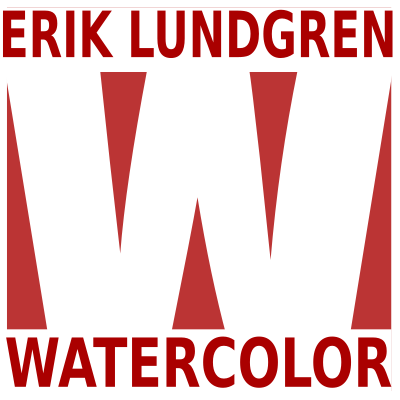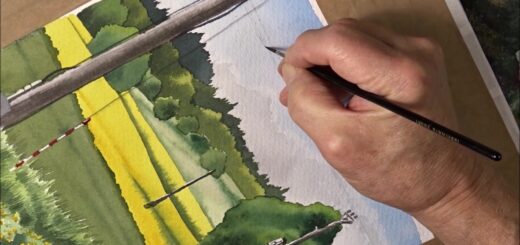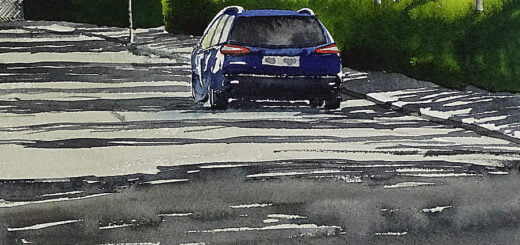From light to dark

In watercolour, you usually talk about two different principles for planning and executing a painting
From back to front
Works exactly as it sounds, you start to paint what is at the back of the subject and gradually work your way forward. It is a way of painting that I often use.
From light to dark
Back to front is a principle that usually works, light to dark always works. Sometimes it is not possible to start along the back of a motif, but starting light, then gradually painting darker and more detailed always works. You can therefore say that the principle from light to dark is a basic principle in watercolor painting.
If you watch any of the videos on Youtube showing different artists painting watercolors, you can notice that almost all of them paint according to the principle: light colors first, then a little darker, and the darkest ones at the end.
The painting begins by coloring parts of the motif with light colors: When all the surfaces to be painted have received a thin layer of paint, the next step begins, a slightly darker color where necessary, the entire surface that was painted first is usually not overpainted with a darker color, but parts of previously light colors are retained. In this way, transitions between light and shadow are gradually built up. Finally, you paint details and really dark parts.
This video shows how this way of painting can work. The painting is done mainly with French ultramarine, burnt and unburnt sienna on Saunders Waterford paper.
Another, fairly common, way to build up a watercolor painting is to first lay a foundation over the entire paper. With this first layer, one tries to establish the color tone and value of the different parts of a painting. This is usually done on a wet paper so that no sharp lines are created. When this first foundation has dried, the next layer is painted slightly darker than the previous one. Then follow more layers of paint, progressively more detailed and darker.
The following is an example of how this can work, the picture is from a vineyard in Tuscany.

1.
On a wet paper, approximate colors and values that correspond to those in the motif are painted. Some parts of the paper are left unpainted. The colors flow into each other, that’s the point.

2.
Now the paper has dried and more defined color layers can be created. Still painted quite simply without a lot of details and slightly darker than in the previous step.

3.
Gradually darker and darker and more details.

4.
The painting ends with the darkest colors and all the details.
For practical reasons, it’s a good idea to start light. Diluted colors adhere well to the paper and can be overpainted without problems. Dark colors, on the other hand, come off easily if they are overpainted with a lighter color. To avoid dark colors bleeding into the overpainting, you always put the dark color last, on top of the lighter color, not the other way around. In addition, it is not possible to paint light on top of dark paint in watercolor.
“From back to front” is sometimes in conflict with “from light to dark” – sometimes not. I like to create the shape of an object by first painting what is behind it. But sometimes it is not possible for practical reasons to follow this principle completely. This can happen when it conflicts with “from light to dark”, in which case “from light to dark” wins













